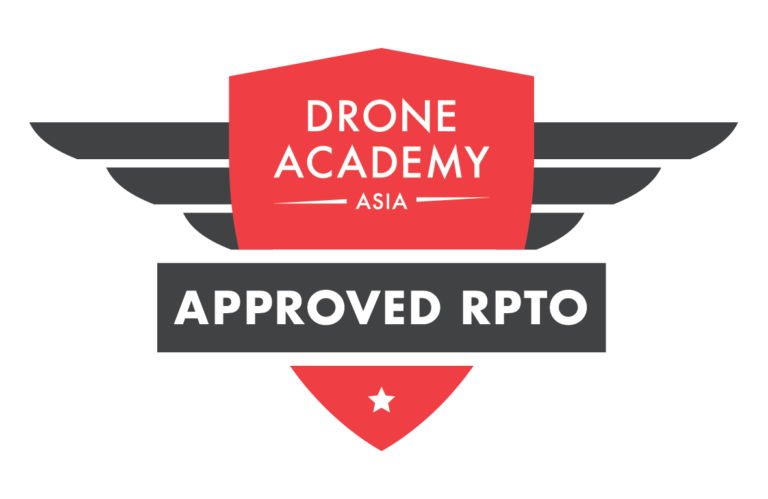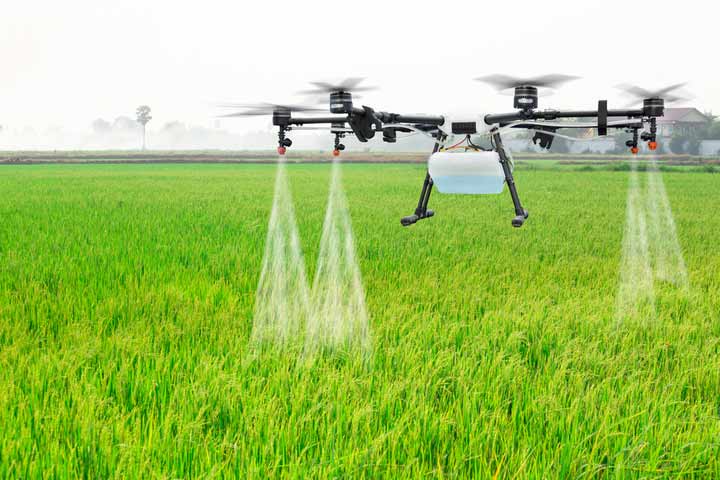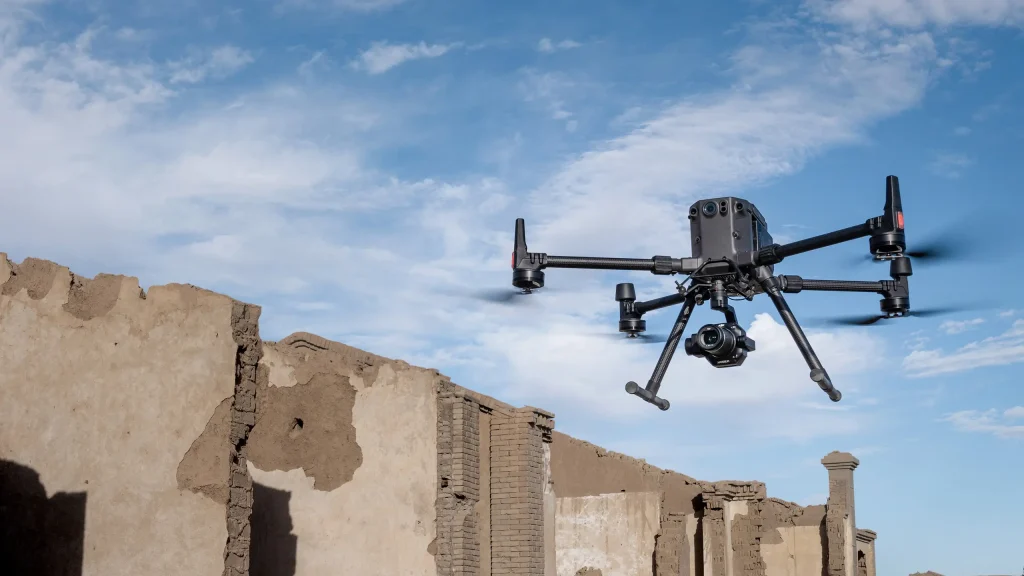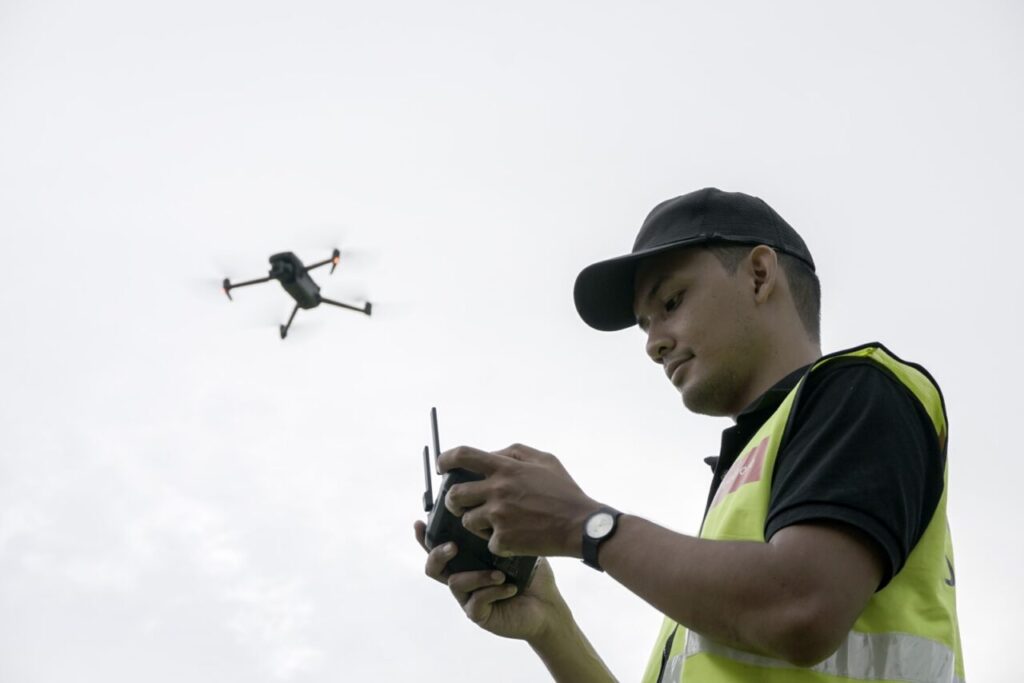In recent year, the rapid advancement of drone technology has given rise to a new breed of professionals known as drone pilots. These skilled operators have quickly become an integral part of various industries, revolutionizing sectors such as photography, filmmaking, agriculture, construction, and even delivery services. With their ability to navigate unmanned aerial vehicles (UAVs) and capture stunning aerial footage, drone pilots have opened up new possibilities and sparked a wave of innovation. This article explores the role of a drone pilot, the benefits of being one and how to become a drone pilot in Malaysia.
The Role of a Drone Pilot
Drone pilots are responsible for controlling drones, also known as unmanned aerial systems (UAVs), through remote control or autonomous flight systems. They possess the technical expertise required to operate these sophisticated machines, often equipped with advanced cameras and sensors. Their primary task is to ensure safe and efficient drone flights while capturing high-quality visuals or collecting valuable data. Whether it’s capturing breathtaking aerial shots for a film or conducting inspections of infrastructure, drone pilots play a crucial role in providing unique perspectives from the skies.
7 Benefits of Being a Drone Pilot
Being a drone pilot comes with numerous benefits, both personally and professionally. Here are some of the key advantages of pursuing a career as a drone pilot:
Exciting and Unique Work Environment
As a drone pilot, you get to work in a dynamic and ever-changing environment. Instead of being confined to a traditional office setting, you have the opportunity to explore diverse locations, from stunning landscapes to bustling urban areas. This constant change of scenery adds excitement and variety to your work.
Access to Unique Perspectives
Drones provide the ability to capture breathtaking aerial views and perspectives that were previously limited to expensive equipment like helicopters or airplanes. As a drone pilot, you have the privilege of seeing the world from a whole new vantage point, allowing you to capture stunning imagery and footage that can be used in various industries such as photography, videography, and filmmaking.
Versatile Application in Various Industries
Drones are revolutionizing a wide range of industries, opening up new opportunities for drone pilots. From aerial surveying and mapping to infrastructure inspections, agriculture monitoring, search and rescue operations, and even package delivery, the applications of drones are expanding rapidly. As a drone pilot, you can choose to specialize in a specific industry or explore different sectors based on your interests and skills.
Flexibility and Autonomy
Many drone pilots work as freelancers or start their own businesses, providing them with the freedom and flexibility to set their own schedules and choose their projects. This level of autonomy allows you to pursue your passion for flying while maintaining a healthy work-life balance. It also enables you to take on diverse projects, collaborate with different clients, and continuously learn and grow in your profession.
Potential for High Earning Potential
The demand for skilled drone pilots is increasing, and as a result, the earning potential in this field is quite promising. Depending on your expertise and the industries you serve, you can earn a competitive income. A drone pilot’s earning can vary based on factors such as experience, location, specialization, and the complexity of the projects undertaken.
Technological Advancements and Learning Opportunities
The field of drone technology is evolving rapidly, with constant advancements in drone capabilities, sensors, and software. As a drone pilot, you have the opportunity to stay at the forefront of these developments and continually enhance your skills. Learning about new technologies, flight planning software, and data analysis techniques not only keeps your work interesting but also enhances your professional value and opens doors to new opportunities.
Contributing to Innovation and Societal Impact
Drones have the potential to make a positive impact on various industries and society as a whole. As a drone pilot, you become a part of this innovative wave, contributing to advancements in fields such as agriculture, environmental conservation, disaster response, and infrastructure development. Knowing that your work has the potential to improve processes, increase efficiency, and even save lives can be highly fulfilling.
Steps to Become a Drone Pilot in Malaysia

- Familiarize Yourself with Drone Regulations: Start by understanding the drone regulations and requirements set by the Civil Aviation Authority of Malaysia (CAAM). Review the rules and guidelines related to drone operations, including registration, flight restrictions, and safety protocols.
- Register Your Drone: If your drone weighs more than 20 kilograms, you must register it with CAAM. Visit their website or contact them directly for the registration process and any associated fees.
- Complete Drone Pilot Training: Enroll in a CAAM-approved drone pilot training program such as Drone Academy Asia, Malaysia’s #1 CAAM Approved Remote Pilot Training Organization. These programs provide comprehensive knowledge and skills required for safe and legal drone operations. Training typically covers topics such as aviation regulations, flight planning, emergency procedures, and drone maintenance.
- Pass the CAAM Drone Pilot Examination: Upon completing the training program, you will need to pass the CAAM drone pilot examination. The exam evaluates your understanding of drone regulations, airspace management, and safe operating practices. Consult CAAM for details on examination dates, locations, and registration requirements.
- Obtain CAAM Drone Pilot Certificate: Once you have successfully passed the examination, you will receive a drone pilot certificate issued by CAAM. This certificate serves as proof of your qualification as a drone pilot in Malaysia.
- Follow Operational Guidelines: Adhere to the operational guidelines provided by CAAM. This includes complying with flight altitude limits, avoiding restricted areas, and maintaining visual line of sight with the drone during operations.
- Stay Updated on Regulations: Stay informed about any updates or changes in drone regulations in Malaysia. CAAM periodically reviews and updates their guidelines, so it is important to stay up-to-date with the latest requirements.
- Fly Responsibly and Safely: Prioritize safety during your drone operations. Always conduct pre-flight checks, assess weather conditions, and follow best practices for safe drone flight. Respect privacy rights and avoid flying over sensitive areas without proper authorization.
- Join Drone Communities and Associations: Engage with drone communities and associations in Malaysia to connect with other drone pilots, stay informed about industry developments, and participate in networking opportunities. This can provide valuable insights, support, and potential collaborations.
Conclusion
In conclusion, being a drone pilot offers a unique blend of adventure, creativity, and professional growth. From the exciting work environment to the diverse applications and potential for high earning potential, pursuing a career as a drone pilot can be both personally rewarding and financially lucrative.
For more information on how to become a drone pilot, Drone Academy Asia is Malaysia’s #1 CAAM approved remote pilot training organization. They provide a few training courses that can help you to become a successful drone pilot in Malaysia.
Subscribe to our newsletter below for more latest article updates!




